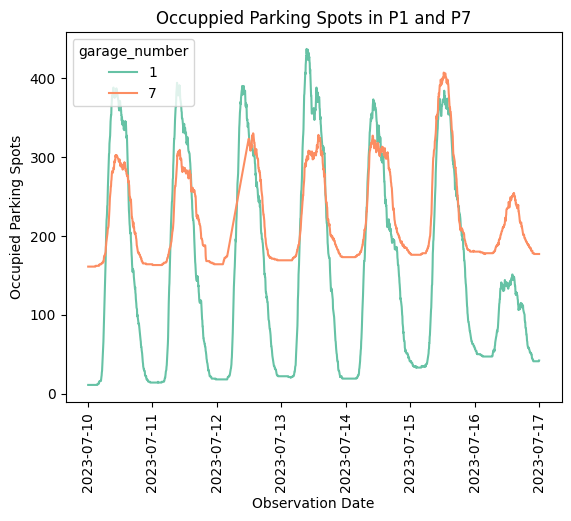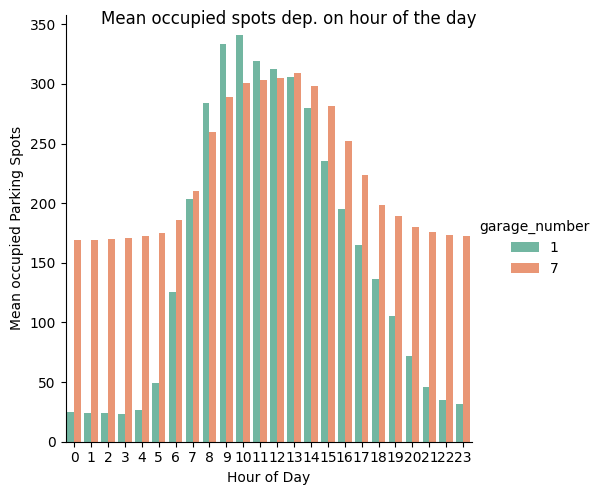Introduction
If you’ve ever driven into city centers, you know that the search for a parking spot can be a bit of a challenge, especially in the heart of the city. Like many people, I’ve circled through the winding streets, hoping to stumble upon an open space in one of the parking garages.
To keep an eye on the occupation of its parking garages, the City of Heidelberg in Germany collects data about the off-streetparking in their parking garages and provides them to the public on their data platform, accessible via the link: https://ckan.datenplattform.heidelberg.de/de/dataset/mobility_main_parking. The data is provided in CSV files or via an API in JSON-Format.
As part of my Nanodegree „Data Analyst“ at Udacity I investigated the parking situation of two parking garages in Heidelberg. The goal of the project was to prepare data by wrangling and cleaning and finally answering a self chosen reseach question. This research question will also be in the focus of this post:
How do the parking garages P1 and P7 compare in their utilization in the week of July, 10th to 16th, 2023?
Analysis
My comparison visualizes the parking garage capacity utilization of the two garages P1 and P7 during an exemplary week in 2023. I have chosen P1 and P7, as the garages are of similar size, but serve different areas of the city.
In the first chart we can see the number of occupied spots of each garage throughout the exemplary week. At first glance, we can see, that both garages have daily fluctuations with fewer cars in the mornings and evenings and a high occupation in the middle of the day.

But the garages also show differences. If we put the curves in a chart together, we see, that P07 has a ground level of parking spots which never drops below 161. This might be due to permanently reserved parking spots for corporate clients. In P01 we see that the level of overnight parking was higher during the weekend from Friday evening till Sunday. We also see, that the utilisation of P07 was highest on Saturday, while P01 reached the highest occupation on Thursday.
Now lets look deeper into the daily fluctuation of occupied parking slots. To visualize the number of parking cars depending on the hour of the day, I calculate the mean occupation of the garage on working days from Monday to Saturday. I excluded Sunday, because the parking behavior on Sunday seems to differ largerly from working days and would bias the calculation.

The chart shows, that Parking Garage P1 Poststrasse on average reaches its maximum occupation between 10 and 11 o’clock while P7 Kaufhof reaches its maximum later in the day between 13 and 14 o’clock. The name of garage P7 „Kaufhof“ already provides one vague possible explanation for this: „Kaufhof“ is a large department store chain in Germany and most shopping malls start their sales at around 10 am and are still closed in the mornings.
Reflection
The results clearly show, that the occupation of parking garages depends on their location and its type of clients. It therefore would be interesting to take further parking garages into account and to enlarge the time window from one week to a larger time horizon of for example several years. Thereby we could get an idea about possible seasonal fluctuations in the occupation of the garages and different areas. I would also integrate further datasets, for example about the weather, to see, if parking behavior shows any correlation to the weather conditions.
For more information about the code of my project, please refer to my repository on GitHub.

